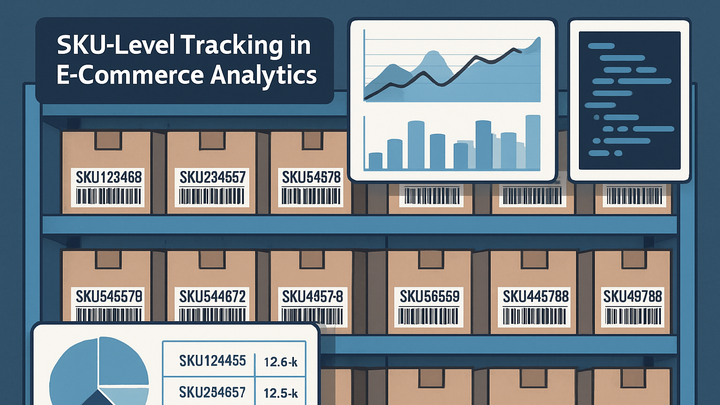Published on 2025-06-26T05:16:39Z
What is an SKU? Analytics Definition & Tracking Examples
An SKU (Stock Keeping Unit) is a unique alphanumeric code assigned to each distinct product or service for sale. In analytics, SKUs serve as the primary key for tracking product-level performance, enabling granular insights into inventory management, sales patterns, and customer behavior. By associating every ecommerce event—such as views, adds-to-cart, and purchases—with its corresponding SKU, analysts can break down data at the individual item level. This facilitates detailed reporting on stock levels, conversion rates, and product trends over time. Leading analytics platforms like Google Analytics 4 and PlainSignal support SKU tracking through ecommerce event parameters and custom properties. Implementing consistent SKU tracking is essential for accurate product analytics and data-driven decision making.
Sku
A SKU (Stock Keeping Unit) is a unique product code used to segment and analyze item-level ecommerce data.
Definition of SKU
This section explains what an SKU is, its components, and its role in analytics workflows.
-
Stock keeping unit (sku)
An SKU is a unique alphanumeric identifier assigned to a product to track inventory and analytics metrics at a granular level. It often encodes information like product variant, size, color, or category in its structure.
Importance of SKUs in Analytics
Explore how SKUs enhance data segmentation, reporting accuracy, and actionable insights in ecommerce analytics.
-
Inventory management
By associating stock levels with SKUs, businesses can monitor inventory in real time to prevent overselling or stockouts.
-
Sales performance
SKU-level sales data reveals top-selling products, pricing efficacy, and seasonal trends for informed merchandising decisions.
-
Customer behavior analysis
Tracking SKUs in user interactions helps uncover which specific products attract, engage, and convert customers.
Tracking SKUs in Analytics Tools
Implement SKU tracking in platforms like GA4 and PlainSignal using ecommerce events and custom properties.
-
Google analytics 4 (GA4)
In GA4, SKUs are sent as item parameters within ecommerce events such as ‘view_item’ or ‘purchase’. Example code:
-
Code example
<script async src='https://www.googletagmanager.com/gtag/js?id=G-XXXXXXX'></script> <script> window.dataLayer = window.dataLayer || []; function gtag(){dataLayer.push(arguments);} gtag('js', new Date()); gtag('config', 'G-XXXXXXX'); gtag('event', 'view_item', { items: [{ item_id: 'SKU12345', item_name: 'Wireless Headphones', quantity: 1 }] }); </script>
-
-
PlainSignal
PlainSignal captures SKU data through custom properties when tracking events. Example tracking code:
-
Initialization and code example
<link rel='preconnect' href='//eu.plainsignal.com/' crossorigin /> <script defer data-do='yourwebsitedomain.com' data-id='0GQV1xmtzQQ' data-api='//eu.plainsignal.com' src='//cdn.plainsignal.com/plainsignal-min.js'></script> <script> // Track a purchase event with SKU PlainSignal('track', 'purchase', { sku: 'SKU12345', name: 'Wireless Headphones', price: 99.99, quantity: 1 }); </script>
-
Best Practices for SKU Tracking
Guidelines to maintain consistent and reliable SKU data across all analytics platforms.
-
Consistent naming conventions
Adopt a standardized SKU format (e.g., CATEGORY-SIZE-COLOR) to simplify grouping and filtering in reports.
-
Use of custom dimensions
Map SKUs to custom dimensions or properties in your analytics tool to enable advanced segmentation and reporting.
-
Regular data auditing
Perform periodic checks for missing, duplicate, or malformed SKUs to ensure data integrity and accurate analysis.
Common Challenges & Solutions
Potential issues in SKU tracking and how to address them effectively.
-
Inconsistent sku formats
Various teams may use different SKU patterns, leading to mismatches. Solution: enforce a single SKU standard across systems.
-
Missing sku data
Gaps in implementation can result in untracked products. Solution: require SKU fields for all ecommerce events and test regularly.
-
Cross-system mapping
Synchronizing SKUs between ERP, ecommerce platform, and analytics can be complex. Solution: maintain a master SKU registry or lookup table.
